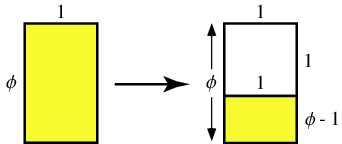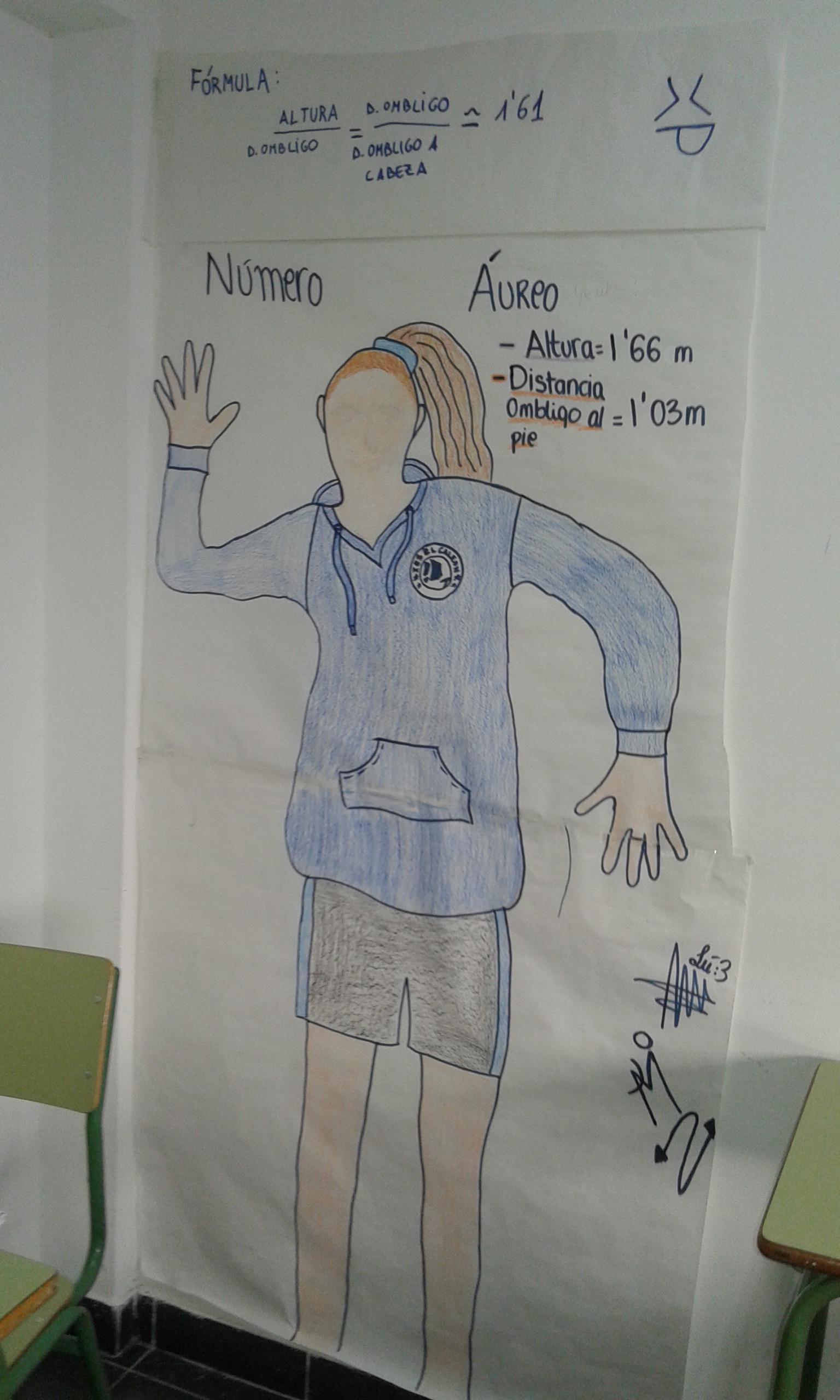1. Golden Ratio Definition and demonstration.-
The golden ratio, also known as the divine proportion, golden mean, or golden section, is a number often encountered when taking the ratios of distances in simple geometric figures such as the pentagon, pentagram, decagon and dodecahedron. It is denoted  , or sometimes
, or sometimes  .
.
The designations "phi" (for the golden ratio conjugate  ) and "Phi" (for the larger quantity
) and "Phi" (for the larger quantity  ) are sometimes also used (Knott), although this usage is not necessarily recommended.
) are sometimes also used (Knott), although this usage is not necessarily recommended.
The term "golden section" (in German, goldener Schnitt or der goldene Schnitt) seems to first have been used by Martin Ohm in the 1835 2nd edition of his textbook Die Reine Elementar-Mathematik (Livio 2002, p. 6). The first known use of this term in English is in James Sulley's 1875 article on aesthetics in the 9th edition of the Encyclopedia Britannica. The symbol  ("phi") was apparently first used by Mark Barr at the beginning of the 20th century in commemoration of the Greek sculptor Phidias (ca. 490-430 BC), who a number of art historians claim made extensive use of the golden ratio in his works (Livio 2002, pp. 5-6). Similarly, the alternate notation
("phi") was apparently first used by Mark Barr at the beginning of the 20th century in commemoration of the Greek sculptor Phidias (ca. 490-430 BC), who a number of art historians claim made extensive use of the golden ratio in his works (Livio 2002, pp. 5-6). Similarly, the alternate notation  is an abbreviation of the Greek tome, meaning "to cut."
is an abbreviation of the Greek tome, meaning "to cut."
In the Season 1 episode "Sabotage" (2005) of the television crime drama NUMB3RS, math genius Charlie Eppes mentions that the golden ratio is found in the pyramids of Giza and the Parthenon at Athens. Similarly, the character Robert Langdon in the novel The Da Vinci Code makes similar such statements (Brown 2003, pp. 93-95). However, claims of the significance of the golden ratio appearing prominently in art, architecture, sculpture, anatomy, etc., tend to be greatly exaggerated.
 has surprising connections with continued fractions and the Euclidean algorithm for computing the greatest common divisor of two integers.
has surprising connections with continued fractions and the Euclidean algorithm for computing the greatest common divisor of two integers.

Given a rectangle having sides in the ratio  ,
,  is defined as the unique number
is defined as the unique number  such that partitioning the original rectangle into a square and newrectangle as illustrated above results in a new rectangle which also has sides in the ratio
such that partitioning the original rectangle into a square and newrectangle as illustrated above results in a new rectangle which also has sides in the ratio  (i.e., such that the yellow rectangles shown above are similar). Such a rectangle is called a golden rectangle, and successive points dividing a golden rectangle into squares lie on a logarithmic spiral, giving a figure known as a whirling square.
(i.e., such that the yellow rectangles shown above are similar). Such a rectangle is called a golden rectangle, and successive points dividing a golden rectangle into squares lie on a logarithmic spiral, giving a figure known as a whirling square.
Based on the above definition, it can immediately be seen that
 |
(1)
|
giving
 |
(2)
|

Euclid ca. 300 BC gave an equivalent definition of  by defining it in terms of the so-called "extreme and mean ratios" on a line segment, i.e., such that
by defining it in terms of the so-called "extreme and mean ratios" on a line segment, i.e., such that
 |
(3)
|
for the line segment  illustrated above (Livio 2002, pp. 3-4). Plugging in,
illustrated above (Livio 2002, pp. 3-4). Plugging in,
 |
(4)
|
and clearing denominators gives
 |
(5)
|
which is exactly the same formula obtained above (and incidentally means that  is a algebraic number of degree 2.) Using the quadratic equation and taking the positive sign (since the figure is defined so that
is a algebraic number of degree 2.) Using the quadratic equation and taking the positive sign (since the figure is defined so that  ) gives the exact value of
) gives the exact value of  , namely
, namely
2. Golden ratio in our bodies.-
We have discovered the Golden Ratio in our bodies at class following these steps:
1.- Find out all the heights of the students, the distance from their feet to their navel,and checking the distance from their navel to their head to see if it equals their height-distance from their feet to their navel.
2.- Then work out with this formula al the ratios of every student at class:

3.- We have realised that all of us were pretty closed to the the Magical Number called Golden Ratio or Golden Number or Divine Proportion=
4.- Then we have choosen the student whose ratio was the closest to the Magical Number.
5.- A student who is quite good at drawing has done the following drawing of the Most Beutifully Proportioned Student at class:
There you are!
